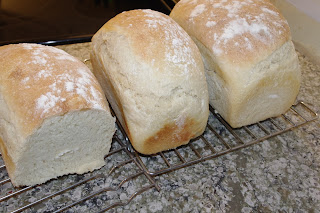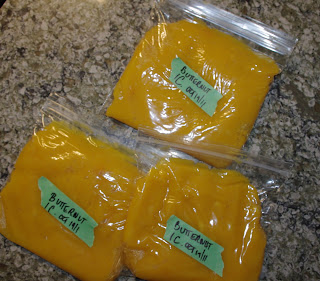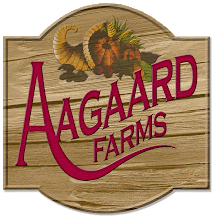I'm really interested, okay obsessed, with soap making these days. We're hoping to have baby goats and fresh milk in about five months (Go, buckling, go!). The point of adding the goats to our little farm was to have another revenue stream and soap is the easiest path, without the regulations, restrictions and costs associated with selling milk and cheese. Now that Farmers Market season and gardening is finished I have the leisure to pursue some extra interests. Problem is, now is not an ideal time to make soap. Soap making involves lye, a somewhat dangerous ingredient that must be handled very carefully; whenever it is used very good ventilation is always strenuously recommended. We are at the time of year when we are constantly and consistently in freezing temperatures - not a great time to have windows open. Furthermore, our kitchen is built in the middle of the house without any windows, only doors leading to other rooms. And, the ventilation system is elderly and rather questionable. May not be a great time to be messing the lye.
So what's someone who is soap obsessed to do? Aside from bathing a lot in other people's products? Well, have you heard of soap noodles? I first read about noodles in the excellent book 'Soap Maker's Workshop' by Dr. Robert S and Katherine J. McDaniel. It's soap someone else has made that is then grated or shredded fresh and shipped off to the end user. The end user just has to melt it and then can finish it at will with added ingredients like fragrances, exfoliates and herbs. This is a process called re-batching or hand-milling. Soap makers will re-batch if they think the lye is not completely dissolved or the color or fragrance is not right - it's a way to correct and re-make a batch of soap. Soap makers will also re-batch to add in herbs, flowers or other things that may be damaged in the high heat of the chemical reaction of lye. You can make your own noodles by simply grating bar soap.
Going online to find soap noodles proved interesting. You can buy soap noodles by the shipping container: apparently lots of large commercial soap sellers are not making their own soap from scratch! I found smaller quantities at the site Soap Crafters, a wholesaler for soap and beauty product supplies. They had a good assortment including a very simple goat milk noodle! I ordered and was so excited to receive my box of noodles just before Christmas. Rather a surprise then, when I went back online to make a note of the ingredients to find the Soap Crafters site closed down because the company had been sold to Elements Bath and Body Works! It's taken a few weeks, but Elements is finally listing one soap noodle, a Shea butter soap. Hopefully, Elements will add more noodles in the next little while!
The process of working with the noodles is really quite simple. The included instructions say to melt it in the oven, in an appropriate oven-proof container, at 200 F, stirring occasionally, until it resembles a very thick soup. Pour into your chosen mold, cool, remove from mold, cut and cure for at least two weeks but six weeks for best results. For my goats milk soap, the instructions called for 1/4 to 1/2 cup of goat milk to be added to one pound of noodles before putting into the oven, and fragrance, exfoliants and herbs are added and stirred in just before pouring into the mold. The McDaniels' book says you can also do it in the microwave or a crock pot.
First batch involved some of the lovely, fresh goat milk from Brambles Nubian Goat Farm. I made it just simple and straight forward, and did just one pound, 1/2 cup was all the milk I had to spare. It took just over an hour to melt down the noodles. Found my chosen mold, an old plastic bread or loaf holder measuring 4" wide by 9" long, was quite large for one pound of soap and I got about an inch of soap in the bottom of the container! A few days later, with store-bought goat's milk I did a two pound loaf, which gave me a block of soap about two inches high. For this one I added lavender essential oil, about ten drops. Smells very nice, so far! Yesterday, I did a three pound batch, adding 1/4 cup of honey and a cup of ground oatmeal, as well as the goats milk. Three pounds made for better sized slices! Now, for the waiting and the curing....
 |
| Noodles and milk, ready for the oven! |
So what's someone who is soap obsessed to do? Aside from bathing a lot in other people's products? Well, have you heard of soap noodles? I first read about noodles in the excellent book 'Soap Maker's Workshop' by Dr. Robert S and Katherine J. McDaniel. It's soap someone else has made that is then grated or shredded fresh and shipped off to the end user. The end user just has to melt it and then can finish it at will with added ingredients like fragrances, exfoliates and herbs. This is a process called re-batching or hand-milling. Soap makers will re-batch if they think the lye is not completely dissolved or the color or fragrance is not right - it's a way to correct and re-make a batch of soap. Soap makers will also re-batch to add in herbs, flowers or other things that may be damaged in the high heat of the chemical reaction of lye. You can make your own noodles by simply grating bar soap.
Going online to find soap noodles proved interesting. You can buy soap noodles by the shipping container: apparently lots of large commercial soap sellers are not making their own soap from scratch! I found smaller quantities at the site Soap Crafters, a wholesaler for soap and beauty product supplies. They had a good assortment including a very simple goat milk noodle! I ordered and was so excited to receive my box of noodles just before Christmas. Rather a surprise then, when I went back online to make a note of the ingredients to find the Soap Crafters site closed down because the company had been sold to Elements Bath and Body Works! It's taken a few weeks, but Elements is finally listing one soap noodle, a Shea butter soap. Hopefully, Elements will add more noodles in the next little while!
 |
| First batch, more a bar than a block. |
The process of working with the noodles is really quite simple. The included instructions say to melt it in the oven, in an appropriate oven-proof container, at 200 F, stirring occasionally, until it resembles a very thick soup. Pour into your chosen mold, cool, remove from mold, cut and cure for at least two weeks but six weeks for best results. For my goats milk soap, the instructions called for 1/4 to 1/2 cup of goat milk to be added to one pound of noodles before putting into the oven, and fragrance, exfoliants and herbs are added and stirred in just before pouring into the mold. The McDaniels' book says you can also do it in the microwave or a crock pot.
First batch involved some of the lovely, fresh goat milk from Brambles Nubian Goat Farm. I made it just simple and straight forward, and did just one pound, 1/2 cup was all the milk I had to spare. It took just over an hour to melt down the noodles. Found my chosen mold, an old plastic bread or loaf holder measuring 4" wide by 9" long, was quite large for one pound of soap and I got about an inch of soap in the bottom of the container! A few days later, with store-bought goat's milk I did a two pound loaf, which gave me a block of soap about two inches high. For this one I added lavender essential oil, about ten drops. Smells very nice, so far! Yesterday, I did a three pound batch, adding 1/4 cup of honey and a cup of ground oatmeal, as well as the goats milk. Three pounds made for better sized slices! Now, for the waiting and the curing....





















































